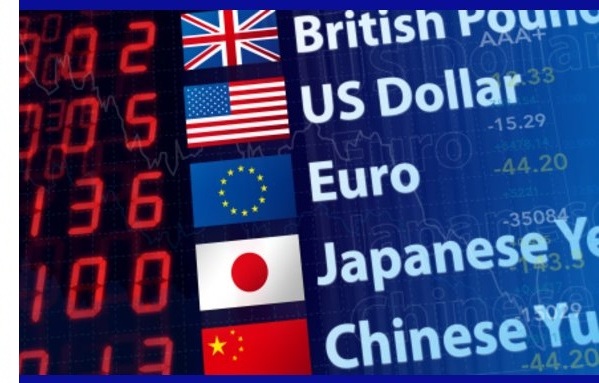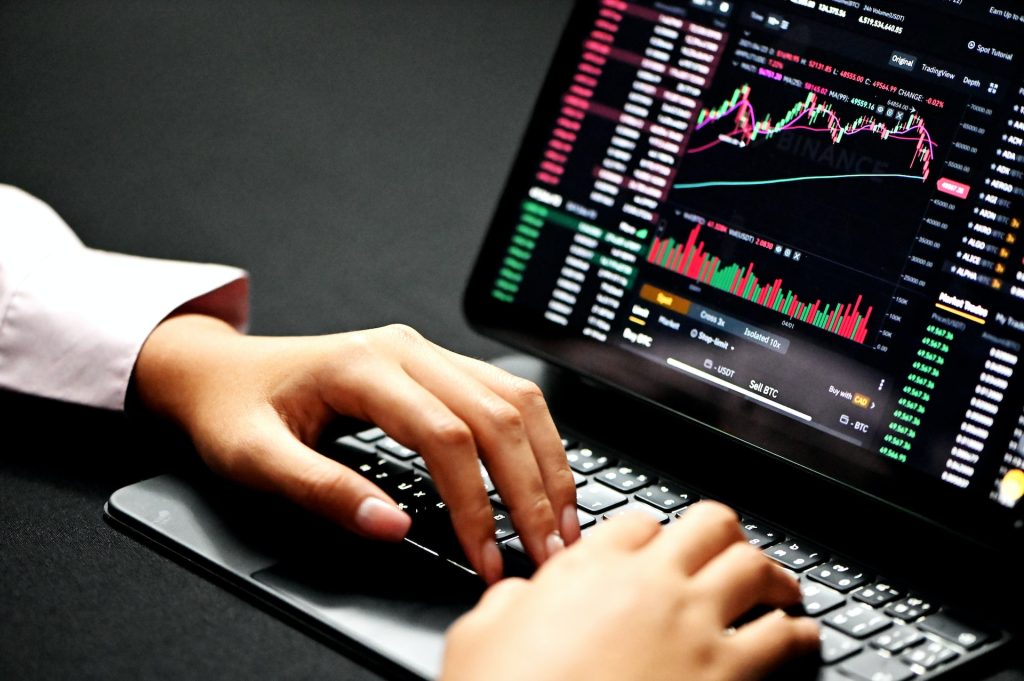Recommended Suggestions To Choosing Forex Trading Sites
Recommended Suggestions To Choosing Forex Trading Sites
Blog Article
Top 10 Risk Management Tips When Considering Forex Trading Online
The management of risk is crucial to Forex trading successful. Here are the most effective risk management strategies to protect your capital and limit losses.
Set Stop-Loss Orders on Every Trade
1. Stop-loss orders automatically close trades once the market has reached the agreed-upon price. This limits potential losses. A stop-loss option ensures that you will not be able to lose more money than you have budgeted for in the event that you are trading against yourself. When you first open a trading account, you must always establish the stop-loss.
2. Define Risk per Trade
Limiting the amount you are able to risk in a single trade should generally not exceed one percent of your balance. You can stay in the market even during losing streaks, and your account will not be depleted by a single trade.
3. Use Proper Position Sizing
The size of your position is the quantity of currency that you purchase or sell in a specific trade. The size of the position you select will be based on your account's size, level of risk for a specific trade, and your stop-loss. If you have a huge stop-loss, then your size of the position will be smaller to keep the risk at the same level.
4. Avoid Over-Leveraging
Gains and losses can be amplified by leverage. Even though many brokers offer high leverage, beginners should stay with low leverage. If you lose a transaction, high leverage can quickly deplete your account. It's best to start with a lower leverage (1:10 and below) until you gain knowledge.
5. Diversify Your Trades
Avoid investing your entire capital in a single currency pair. Diversifying through trading multiple timespans and pairs can help lower the chance of losing money from unexpected events affecting the market segment or a particular pair. But, be cautious about excessive diversification as it can squander your concentration and spread your investments too thinly.
6. Set up an Investment Plan that includes Risk Limits
It is much easier to maintain discipline with a trading plan with clear guidelines for entry, exit, and risk tolerance. Set your daily or weekly risk limits, such as not putting more than five percent of your account per day. If you exceed your limit, stop to reconsider your strategy instead of going on to trade in emotions or anger.
7. Use Trailing Stops for Maximum Profits
A trailing stop can adjust its stop-loss as your trade progresses in your favor. This allows you to gain if the market changes around, while giving your trade the chance to grow in a positive direction. It is an effective way to protect profits without closing your position too soon.
8. Beware of the temptation to trade in revenge by controlling your emotions
Emotional trades can lead you to make bad decisions and take excessive risks. Frustration, anger and fear may lead you to make reckless decisions or accept greater risk than you had planned. Avoid revenge trading or trying to recuperate losses in one trade after losing a trade. Stay with your strategy and reduce risk to avoid escalating losses.
9. Avoid Trading During High-Impact News Events
The market can become very volatile after high-impact news is announced, such as central bank decisions or economic reports. It's better to avoid news trading if your aren't familiar with the process. Price increases could cause sudden losses.
10. Keep a Trading Journal to Analyze Mistakes
Keep a trading journal. This will enable you learn from losing and winning trades. Keep detailed records of each trade. Include the reason why you took the trade, the risks and the place where the stop-loss was placed and what the outcome was. A regular review of your journal can reveal patterns in your mistakes and success, allowing you to improve your risk management as time passes.
Forex trading involves a lot of risk management. It is crucial to recognize profitable opportunities as well as managing your risk. Following these tips will help you protect your capital, reduce losses, and create a sustainable trading approach. Read the recommended https://th.roboforex.com/ for more info including forex trading forex, forex trading strategies, foreign exchange trading online, best forex broker in usa, forex market online, 4x trading, best currency trading platform, forex trading platform, forex app trading, fx trade and more. 
Ten Tips For The Successful Trader In Forex Using Fundamental And Technical Analysis
Fundamental and technical analysis are crucial to Forex trading. They can help you make better decisions. Here are ten top strategies for using fundamental and technical analysis in trading online Forex trading.
1. Find the key resistance and support levels
The levels of support and resistance are price levels that can result in currency pairs to stop or reverse. These levels function as psychological barriers, making them crucial for planning entry and exits. Try to recognize these zones to know where the price might reverse or break out.
2. Use multiple timeframes in order to get a more comprehensive view
Analyzing charts that have different timeframes, such as daily, 4-hour, and 1-hour, provides insights into the bigger picture as well as the short-term trends. While higher timeframes can be an excellent indicator of overall trends, lower timeframes will give more precise timing and entry points.
3. Master Key Indicators
Moving averages as well as Moving Average Convergence Divergence, or MACD Three of the most crucial Forex indicators. Learn about the purposes of each indicator and learn how to integrate them for improved accuracy.
4. Candlestick patterns are crucial to keep in mind
Candlestick patterns that incorporate hammer and doji patterns and engulfing Doji patterns can indicate possible price reverses. To be able to recognize possible shifts in price, familiarize yourself with patterns. Combining candles with other tools such as support/resistance could assist you in improving your trading timing.
5. Use Trend Analysis to Find Directional Clues
Use trendlines and moving averages to detect uptrends, downward trends or markets that are swaying. Forex traders are often tempted to trade in the direction the trend is heading. This approach is a reliable method of achieving outcomes. The opposite of the trend is not recommended unless you are extremely experienced.
Fundamental Analysis Tips
6. Learn about Central Bank policies and interest Rates
Central banks such as the Federal Reserve or the European Central Bank manage interest rates that directly impact the value of currencies. Higher interest rates tend to strengthen currencies, and lower rates could weaken it. Be on the lookout for central bank announcements as they are often the trigger for major market movements.
7. Follow Economic Indicators and Reports
Economic indicators that are crucial to the economy, like GDP levels, unemployment as well as inflation and consumer confidence offer information about a country's health and influence currency values. To keep track of the latest releases, you can use an economic calendar to keep track of the impact of these indicators on your currency exchange rates.
8. Geopolitical Events and News Analysis
Currency markets can be affected by political events such as elections, negotiations or conflicts. Be aware of global news especially about important economies like the U.S.A, Eurozone, China. Prepare to alter your plan if abrupt geopolitical shifts occur.
Combining Technical and Financial Analysis
9. Aligning technical signals with fundamental Events
Combining technical with fundamental analysis is a great option to boost the quality of your decision-making. As an example for a technical setup, if it confirms a trend upwards and an economic report that is favorable is expected These two elements can indicate more positive buy signals. Both strategies should be synchronized to reduce uncertainty, and increase chances of success.
10. Utilize Risk Events as Trading Opportunities
The volatility that is caused by major events, like Federal Reserve meetings or the release of non-farm payments (NFP), can cause rapid changes in price. Many traders steer clear of these times due to unpredictability, but when you're an experienced trader and have a good understanding of the technical analysis around these events to capitalize on price fluctuations. Practice caution, use tightly-spaced stop-loss orders, and be prepared to change quickly.
The combination of technical and fundamental analysis is vital in Forex trading to provide an understanding of the market. When they master these strategies, traders can better navigate currency markets and make better strategic choices, and improve overall performance. Read the top rated https://th.roboforex.com/forex-trading/assets/other-assets/ for more advice including foreign exchange trading online, fx trading platform, broker cfd, forex app trading, united states forex brokers, best forex trading platform, forex trading strategies, fbs review, good forex trading platforms, forex trading forex and more.
Strategies For Trading Forex To Meet Your Financial And Personal Objectives
Set clear financial and personal goals is vital to success in Forex trading. A well-defined goal helps keep your trading focussed and regulated, while also aligning with your financial goals overall. Here are ten tips on how you can set and achieve financial and personal goals when trading online.
1. Define Your Financial Objectives Clearly
Set the goals you want to achieve for your finances, like a return on an investment percentage or a monthly income. Choose your goals in finance: capital growth (growth of assets), additional income (income to supplement your current income) or wealth preservation. When you have defined your goals, you will be able to pick strategies that can help you achieve the desired results.
2. Create a Realistic Timeframe
Training, learning and increasing your knowledge of forex trading can take time. Establish short-term, medium-term, and long-term objectives to keep track of your progress and help you avoid stress from unrealistic expectations. You could set a short-term trading strategy and a long-term return goal.
3. Determine Your Risk Tolerance
Review your risk tolerance and align your goals with it. You must be ready to accept greater volatility, and even potential losses, in the case of high returns. Knowing your risk tolerance can help you choose strategies and goals that don't go beyond your familiar zone.
4. Plan a Capital Allocation Strategy
Determine the percentage of your funds you're willing invest in Forex trading. You must ensure that you have the capital to trade without jeopardizing the security of your finances. Make sure that trading doesn't affect the your funds for paying bills, savings or other personal obligations.
5. Priority is given to the growth of the skills
Don't solely focus on the return you earn from your financial investments. Instead, you should strive to keep improving your knowledge and trading skills. You can set skill growth goals like learning certain strategies for trading or improving your risk management abilities or figuring out how to manage your emotions under pressure. As time passes, your skills will become more consistent and refined.
6. Prioritize Consistency Over Large Wins
Many traders are looking to make huge profits quickly. However, the most experienced traders recognize that smaller regular gains will last longer. Make a goal that is realistic for every month. A consistent return can help you avoid high risk behaviors and build up a track record of reliability.
7. You must commit to tracking and reviewing your own performance
You should keep a log in which you track every trade and evaluate the results. Also, reflect on the lessons you have gained. Monitoring your performance on a quarterly basis or monthly allows you to adapt your strategies and stay accountable. It also helps refine your strategy.
8. Set goals for mental and behavioral behavior
Trading takes mental discipline and emotional management. Set goals based on psychological aspects, like minimizing impulsive trades, sticking to your plan for trading and limiting the desire to revenge trading. These goals will help you develop a strong mind-set and focused attitude.
9. Do not compare yourself to others.
Check your Forex trading results with those of other traders and you could be under pressure that isn't needed taking risky and unwise decisions. Make your goals based on your personal development and financial capabilities, not the results achieved by other traders. Make an effort to make improvements gradually rather instead of beating the competition.
10. Decide on your exit strategy, or financial stage
You should think about setting goals so that you are able to either stop trading or take profits. Also, evaluate your performance. If you reach a specific target for profit, you can take some of your gains and put them into reinvestment or enjoyment. If you set the "take profit" point, you can stay clear of overtrading, while appreciating your accomplishments.
Making and implementing your personal and financial Forex trading goals that are well set can improve your discipline as well as lessen the stress you experience and assist you in guiding yourself towards steady growth. Be aware of the need to alter your objectives as you get more experience and keep an eye on your personal accountability, continuous improvement and consistency. Read the top https://th.roboforex.com/forex-trading/platforms/metatrader4-mt4/ for site tips including top forex brokers, best rated forex brokers, broker trading, forex best trading app, best rated forex brokers, app forex trading, forex exchange platform, broker trading, forex trading forex trading, forex brokers usa and more.